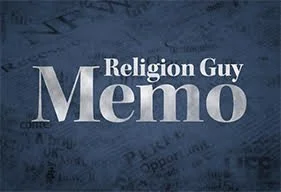Last week, The Religion Guy spent some time discussing the history of religion reporting with the veteran journalism educator Will Norton, from GetReligion’s home base at the Overby Center at the University of Mississippi. This topic come up: Religion-section articles written in the heyday of Time magazine were very much team efforts enriched by talented field correspondents, stringers, in-house reporter-researchers, photo editors and more.
Also, a quick-witted library staff exploited a 75,000-volume reference collection, expanding digital data banks (thank you, LexisNexis!) and Time Inc.’s own story files that spanned decades. After the library was largely disbanded its #2, Lynn Dombek, became director of our Associated Press research center, winning a corporate prize for aiding bureaus worldwide. Lynn later created startup First Look Media’s research department and is now the research editor at ProPublica.
A Dombek interview with the Poynter Institute underscores the importance of the behind-scenes and all-too-unheralded librarians at major news shops.
OK, but what about journalists at smaller organizations, or scrambling solo freelancers, or researchers at financially-strapped religious agencies?
For them, too, reference works are vitally important for facts and reliable interpretations in this highly complex field but can be expensive. The infinite information online is free but requires careful vetting and can be spotty, lacking important resources available only via print or online subscriptions.
The Guy urges those committed to career-long journalism about religion, and other specialists, to build reference libraries as much as finances allow. Given the prices for reference works, encourage nearby public or college libraries to have on hand the following recommended resources (some cited in previous Guy Memos).
The “World Christian Encyclopedia” (3rd edition, 2019, Edinburgh University Press; online version sold by Brill) collects and analyzes statistics, history, and other basics on all religions, and on all branches within Christianity, both at the global level and from on-the-ground sources for each country in the world. Unique and invaluable.
“Melton’s Encyclopedia of American Religions” (Gale, 9th edition, 2017, in print and e-book versions), also unique, has the particulars compiled over four decades by a Baylor University expert, covering some 2,300 denominations and primary groups that span all faiths, with taxonomy organized by 26 faith families, and info on obscure sects available nowhere else.
Several major publishers have reliable one-volume encyclopedias on the major world religions and you’ll want to own one or two of these. But for either research depth or quick newsroom needs, a comprehensive multi-volume reference work is important. The big example on sale is the 15-volume “The Encyclopedia of Religion” (Macmillan, 1987, 2nd edition 2004), available from amazon and other online sellers. The 1987 original had 2,750 articles; the second edition reworked many of those and added another 1,000.
From a journalist’s standpoint, The Guy has sometimes found this vast resource lacks needed specifics while emphasizing gauzy social-science generalizations and theories about “the mind and the behavior” of humanity’s spiritual seekers, in the phrase of its revered original editor at the University of Chicago, Mircea Eliade.
Thus, The Guy often resorted to the Time library’s dog-eared, 13-volume “Encyclopaedia of Religion and Ethics,” edited by Scotland’s James Hastings and still sold by rare book outlets. It’s a century old, smacks of western colonialism, and omits primitive religions on which Eliade excelled. But it usually had the historical goods. Do others agree? Will somebody please produce an equivalent resource for the 21st Century?
A full-bore library should also have the “New Catholic Encyclopedia” (2002 2nd edition) and “Encyclopedia Judaica” (2006 2nd edition). More than a century out of date but free online and useful for older history are both the “Catholic Encyclopedia” and “Jewish Encyclopedia.”
On to scriptures.
Any serious-minded religion writer needs to own “The Study Quran” (HarperOne, 2015), a landmark prepared by a team of North American Muslim scholars led by the eminent Seyyed Hossein Nasr. Its fresh modern English translation of Islam’s holy book is accompanied by an extensive and all-important commentary.
For the Bible, due to King James-y verbiage so familiar to readers, The Guy often quotes the Revised Standard Version. For gender-inclusive purposes there’s the New Revised Standard Version (updated edition, 2021). For either or both translation texts, “The New Oxford Annotated Bible” edition with helps is a good choice. (Also note the wide variety of translations featured, for free, at the Bible Gateway website.)
Likewise recommended are “The Jewish Study Bible” (Oxford, 2nd edition, 2014) and “Catholic Study Bible” (Oxford, 3rd edition, 2016). “The NIV Study Bible” (Zondervan, “fully revised edition,” 2020) uses a favored evangelical translation, with comments that also broadly agree with Catholic traditionalism and Orthodox Judaism on historical interpretation.
Then there’s the rightly lauded comprehensive Cadillac of Bible reference works. The six-volume “Anchor Bible Dictionary” (1992, print and software editions on sale online) includes 6,000-plus articles by nearly 1,000 contributors reflecting a mainstream scholarly consensus that employs modern “higher criticism” without lurching to the radical doctrinal left.
The Anchor can be compared with more conservative evangelical interpretations, largely from Britain (again reflecting Catholic and Jewish traditionalism on historical debates), in InterVarsity Press’s duo of the “New Bible Commentary” (4th edition, 1994) and “New Bible Dictionary” (3rd edition, 1996).
FIRST IMAGE: An uncredited graphic features with an Inside Higher Ed post: “Changed, Changed Utterly.”


